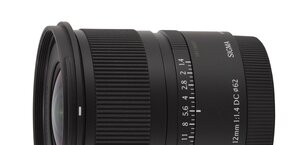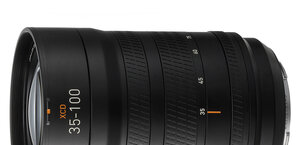Tokina AT-X 124 PRO DX II AF 12-24 mm f/4
4. Image resolution
Firstly let’s check how the tested lens fares in the frame centre.

Please Support UsIf you enjoy our reviews and articles, and you want us to continue our work please, support our website by donating through PayPal. The funds are going to be used for paying our editorial team, renting servers, and equipping our testing studio; only that way we will be able to continue providing you interesting content for free. |
- - - - - - - - - - - - - - - - - - - - - - - - - - - - - - - - - - - - - - - - - - - - - - - -
The performance at the focal length of 12 mm, very important for this lens, is excellent. In fact it can be compared with the results of good “primes”. Very high MTF50 values at the maximum aperture are something worth emphasizing here – they don’t differ much from those obtained by f/5.6. In the case of the older version of the Tokina, the difference in resolution between f/4.0 and f/5.6 was bigger. Perhaps it was a matter of different specimens and perhaps the new Tokina just generates higher MTF50 values. The second option seems to be more probable. Even if the optical system remained the same, new coatings can change contrast and, after all, the MTF50 function is sensitive not only to details but also to the overall contrast of a picture.
At longer focal lengths, the MTFs decrease. The results at 18 mm are still very good, though. Even at the maximum aperture we exceed significantly the level of 40 lpmm so the pictures are really sharp.
The worst result we have at 24 mm. Still, you can hardly call it bad. Quite the opposite, in fact – even wide open, we see the lens reaching the value of over 38 lpmm so distinctly above the decency level, which, in the case of tests conducted on the 50D, is set near 34-35 lpmm. Also you should hardly blame the Tokina for worse results at longer focal lengths. When it comes to zoom lenses ( assuming the price and the dimensions are reasonable), it is virtually impossible to keep the sharpness on the same level throughout the focal range, at the centre and at the frame edges as well. In the case of an ultra wide-angle lens, if I had to decide what should be better, the shorter or the longer end, I would make the same move as Tokina constructors - I prefer having an excellent range of 12-16 mm, because often that’s the feature potential buyers are looking for. After all, it doesn’t matter so much that near 24 mm we see worse results; any standard lens includes this focal length as well.
Let’s progress to the Tokina’s performance at the frame edge.

Once again, the 12 mm focal length gets our recognition. The MTFs are significantly lower than in the centre but still they exceed distinctly the level of 40 lpmm. As a result the landscapes shot with the Tokina at 12 mm and even near the maximum aperture will be sharp in the centre and at the edge of the frame.
The situation changes a bit when we start analyzing longer focal lengths. The maximum relative aperture leaves some room for improvement here because at 18 mm we are only reaching the decency borderline and at 24 mm- even below it. Fortunately on stopping down by 1EV we see the problem solved – from f/5.6 the images, even at the frame edge, become fully useful. To tell you the truth, though, they are useful with one little reservation, which can be noticed in the crops below and we are going to write about it in the next chapter.
 |






